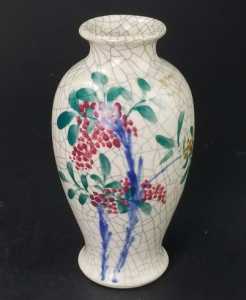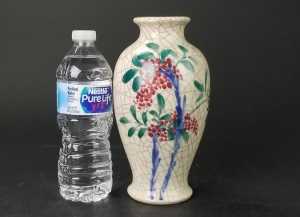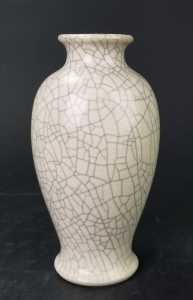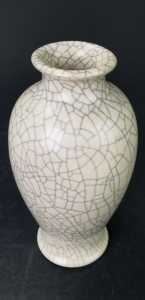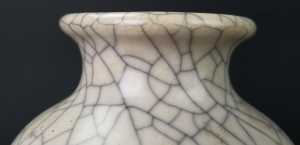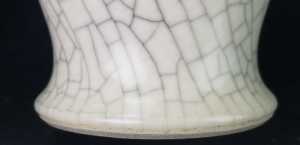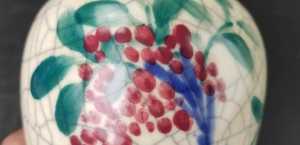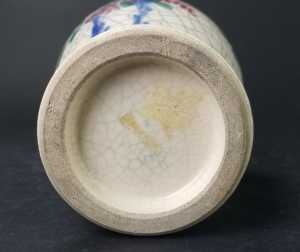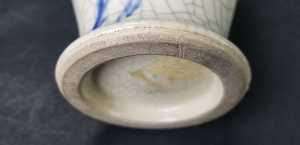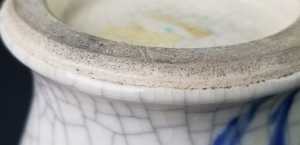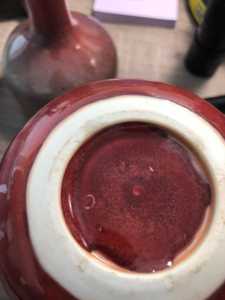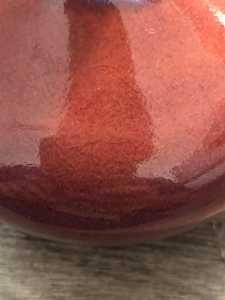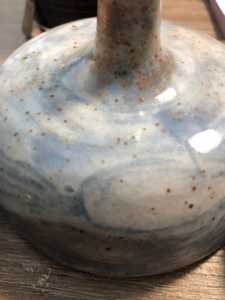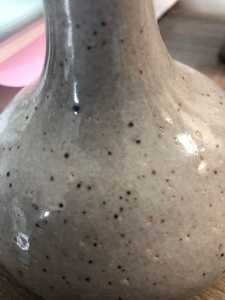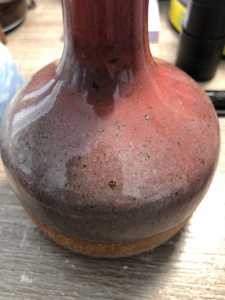The Chinese and Asian Art Forum. For Fans, Collectors and Dealers.
 Basic Rules For the BidAmount Asian Art Forum: Talk about whatever you want. You can even discuss and offer things that are for sale if they are authentic. Maximum image file size per post is 2 MB. Images of 700pxl x 700pxl are optimal if saved at a medium resolution. Be respectful of others and enjoy yourself. Click the YouTube link for a brief tutorial on using the forum. You can also EMBED Videos by cutting and pasting from You-Tube, Vimeo etc.
Basic Rules For the BidAmount Asian Art Forum: Talk about whatever you want. You can even discuss and offer things that are for sale if they are authentic. Maximum image file size per post is 2 MB. Images of 700pxl x 700pxl are optimal if saved at a medium resolution. Be respectful of others and enjoy yourself. Click the YouTube link for a brief tutorial on using the forum. You can also EMBED Videos by cutting and pasting from You-Tube, Vimeo etc.
NOTE: To post an item or add a new post, click open the category title from the FORUM LIST, and CLICK the Blue ADD TOPIC button.
Hello all,
I recently acquired an incredible grouping of vases from an ex-dealer's estate collection, and one of the vases was this unusual ge type vase. One side of the vase has overglaze painted flowers, that do not look Chinese in style to me, so I'm wondering if this vase would be considered an English "clobbered" vase? I've had a piece or two of clobberware, but never something as nice as this... and I can't seem to fine ONE clobbered ge-type vase online! So did they even clobber them? I guess it's whatever they felt like clobbering right? If this vase was not painted over, it would be 10x better in my opinion, but some people may like it more.
I am certain this vase is antique and not some newer copy... when I got it, it was covered in dust and dirt, and almost yellow in color, especially near the mouth, so I took a cloth with some hot water and just wiped it down, and wow what a difference... At the same time, I wish I took some pictures before I cleaned it, because the smaller crackles in between the black cracks were a beautiful golden color from the dirt and dust getting in there (which is what you like to see on a ge vase), but it easily washed away. The foot rim looks nice, with knife marks, and the glaze stops pretty nicely...does anyone have good experience with these ge-type vases? My guess is that its from the 19th century at least, but could it possibly be earlier? Especially if the flower design is an English clobbered design and they received it via export back in the late 18th or early 19th century?
Basically my questions are, is this vase considered "clobbered?" Have you seen any similar flower decorations like this? There's no chance it's a Chinese painting right? And lastly, what is your opinion on the age of the vase itself?
Thank you all!
Eric
Thanks for the reply, I do appreciate it. I believe it is much earlier than that, actually I'm pretty certain, but I'd love to hear others thoughts as well.
The base looks Japanese. Did Chinese have this type of flat base?
It may be, Brian, I really don't know, but the colours of the flowers seem to stir my memory but I am not sure why, could be something Japanese.
How much older do you think it is, Eric. Do you have some information from where you got it?
The base was one reason I thought it was post 1950. I also haven't really seen anything like that base on older Chinese pieces, which often have thinner dark coloured foot rims, however I did find this flat one, but as you can see it is very different.
I agree with Julia. It can't be clobbered, and was deliberately painted to appear this way. The green, red, and blue are all underglazes. Clobbered decorations are all done in overglaze enamels in Europe because the glaze and underglaze decorations were already applied in China. This means that the blue, green, and red colors were painted directly onto the bisque ware, then a glaze is applied and fired together in a kiln.
I think this is a studio piece.
Thank you guys very much for your thoughts, they have been incredibly helpful! I mistakenly assumed the painting was overglazed, because the unusual colors and style just look like it would be overglazed, but upon closer look you are correct John it is underglazed, so I agree that would rule out it being clobbered in England! I stupidly should have looked closer instead of assuming!
I got it at a local small auction, who cleaned the estate of a collector/dealer, and in his collection I was able to purchase many antique Chinese pieces, but this vase came on a different tray lot with other non-Chinese antique vases such as Rookwood, Owens, an art deco Stangl, Saturday Evening Girls, etc.. I'm guessing they just arranged the tray lot to have early vases, but there's no real correlation there. I agree Julia that the base does not look like typical Chinese foot rims, but I did find some (not many that's for sure) that were somewhat close at least, so it definitely had me wonder.
Some reasons I believe it to be old are; There's some black bubble imperfections under the glaze, the secondary crackles have a nice golden color in person actually but its harder to see in the pictures, the inside of the vase is incredibly dirty with plenty of built up grime over time, and the initial amount of dirt and dust built up on it before wiping it down was very consistent with old vases I've had, then there's a nice thickness to the glaze that stops near the foot, and the color of the paste definitely appears to have age but I guess that all depends on where it was made.
All that being said, I now believe, and agree with all three of you, John, Brian, and Julia, that this vase is either an interesting studio pottery piece, or a Japanese piece, and I believe it dates to the 1920's or 30's, maybe earlier.
Thank you guys again for the help, I'm glad I posted!
Regards,
Eric
Glad to help, Eric! I can see why you posted it though. I find it very attractive. It seems like a fun modern twist on Chinese ceramics. I say I believe it is a studio piece because I think I'm familiar with the underglaze and glaze used. The underglazes are very much the same colors and consistency as the Amaco underglazes I use, and the glaze seems to be some sort of Raku crackle glaze, which can have black spots/imperfections. Ex: https://shop.clay-planet.com/r-1-clear-crackle-raku-glaze.aspx
It is just my opinion of course, as you are the best judge since you have it in front of you. I like it very much.
I am also an advocate against using bright-line rules on determining if something is old. Black imperfections, large bubbles, iron oxide lines, and glaze control can all be pre-determined before a piece goes into a kiln by adjusting the composition of the glaze. These were all made within the last couple of months and in an electric kiln.
Hello John,
Thanks again for all the help! I'm grateful to hear from a potter with experience using different glazes. The raku glaze you posted looks very similar, so I would have to agree that it is likely a studio piece. Too bad it's not Chinese, but it's still an interesting and beautiful vase that is well made!
I agree that using the color of the crackles is not a great way to determine the age, I just figured when I added everything together it made more sense, but I'm definitely thinking twice now about the age. Interesting about the black spots, I definitely learned something there so thanks for sharing, as I just assumed it was from the impurities in the glaze or from the wood firing. I did look at the glaze with a high powered loupe, and there was a fine bubble pattern, which I've always associated with antique wood fired pieces, but I can't remember the actual science behind that or if it's reliable (probably not). Do you know anything about that John? Thanks again for all the help, I truly appreciate it, and I'm very happy to have learned something.
-Eric
Hi Eric,
I think that using bubbles as a determinant of age or firing method has been discredited. The issue with this is that the glaze composition can affect the "bubble pattern" as well, and the fact that wood kilns are still used today. I will ask the glaze expert in my studio about this, but he's helped me learn a lot about making glazes and adjusting for certain desired effects. The sang de boeuf glaze for example in my second photo has larger bubbles than all of my Kangxi, Yongzheng, and Qianlong export pieces, and it was fired in an electric kiln.
Best practices I think with discerning age is that everything has to match known examples, especially including design and execution of that design rather than solely adding together the technical firing aspects. However, I am very much a novice with Chinese domestic wares as my area of interest is 18th- and 19th-century Chinese export porcelain.
Kind regards,
John
Thanks for visiting "The BidAmount Asian Art Forum | Chinese Art"
If you sell on eBay, or have a shop feel free to post images and descriptions and links.
Check back often for discussion about the latest news in the Chinese art and antique world. Also find out about the latest Asian art auctions at Sotheby's, Christie's, Bonhams and Tajans.
Auction results for: fine porcelain, ceramics, bronze, jade, textiles and scholar's objects. As well as Japanese, Thai, Vietnamese and other Asian cultures.
Thank you,
Peter Combs
Topics and categories on The BidAmount Asian Art Forum | Chinese Art
Kangxi vases, Kangxi dishes and chargers, Kangxi ritual pieces, Kangxi scholar's objects, Qianlong famille rose, Qianlong enamels, Qianlong period paintings, Qianlong Emporer's court, Fine porcelain of the Yongzheng period. Chinese imperial art, Ming porcelain including Jiajing, Wanli, Xuande, Chenghua as well as Ming jades and bronzes.
The BidAmount Asian Art Forum | Chinese Art
A free Asian art discussion board and Asian art message board for dealers and collectors of art and antiques from China, Japan, Korea, Thailand, Cambodia, Vietnam and the rest of Asia. Linked to all of the BidAmount Asian art reference areas, with videos from plcombs Asian Art and Bidamount on YouTube. Sign up also for the weekly BidAmount newsletter and catalogs of active eBay listing of Chinese porcelain, bronze, jades, robes, and paintings.
The art of calligraphy - and for the ancient Chinese it certainly was an art - aimed to demonstrate superior control and skill using brush and ink. Calligraphy established itself as one of the major Chinese art forms during the Han dynasty (206 BCE - 220 CE), and for two millennia after, all educated men were expected to be proficient at it.
The Museum’s collections of Asian art span nearly five millennia and encompass the cultures of China, the Himalayas, India, Japan, Korea, and Southeast Asia. In 2007, the Museum launched an initiative to create dedicated galleries for the collection, beginning with a gallery for the arts of Korea ...
Chinese art is full of symbolism, in that artists typically seek to depict some aspect of a totality of which they are intuitively aware.
China Online Museum is the finest online museum of Chinese art. It features Chinese calligraphy, painting, ceramics, bronzes, carving, and other artworks.
Chinese Ceramics & Works of Art. Overview Upcoming auctions Contacts Auction results ... Christie’s sales of Chinese ceramics and works of art showcase centuries of Chinese history. Held throughout the year in London, New York, Paris and Hong Kong, they attract a wide audience of collectors and connoisseurs vying for pieces as diverse as ...
Explore Asian Art Week. Contact the Specialist Department. Chinese Paintings ... Senior Specialist, Head of Sale. [email protected]. Tel:+1 212 641 5760. Bid in-person or online for the upcoming auction:Fine Chinese Paintings on 10 September 2019 at New York. Bid in-person or online for the upcoming auction:Fine Chinese Paintings on 10 ...
Discover an abundance of must-see art from all corners of a vast continent at Christie’s NY Asian Art Week. From contemporary classical and Chinese paintings to works with exemplary provenance from the Art Institute of Chicago, our Rockefeller Paza galleries will be full of ancient treasures and contemporary masterworks in a salute to the vibrant arts of Asia.
Sold to benefit The Art Institute of Chicago’s Asian Art Acquisition Fund, the sale features 84 lots with a focus on Ming and Qing porcelains, and offers a rare insight into the taste for collecting Chinese ceramics and works of art in the Midwest from the end of the 19th century through the 1980s. Highlights include two Wanli wucai garlic-head vases, a Qianlong mark and period, blue and ...
Specialist, Chinese Paintings, Christie's London Dr Malcolm McNeill is a Specialist in Chinese Paintings at Christie’s, based in London. He previously worked as an assistant curator of the Chinese collections and the Victoria and Albert Museum in London, as a researcher at the British Museum, and as a translator and tour guide at the National Palace Museum in Taipei.
The Christie's Education 2020 Conference: The Chinese Art Market 18 Jun 2019 Christie’s Education is delighted to announce our first international academic conference in Asia which will take place in Hong Kong from 26-27 November 2020 at the Hong Kong Convention and Exhibition Centre and will run in parallel with Christie’s Hong Kong Autumn Auctions.
The summer Chinese Art sale in Hong Kong will feature works of art from several private collections, including Qing porcelains and textile from the collection of the legendary Chinese art dealer A. W. Bahr (1877–1959), fine gilt bronze Buddhist sculptures from an old Hong Kong collection, an East Asian collection of Qing dynasty wine cups and jades, and a Japanese collection of Song ceramics ...
Sotheby's Chinese Works of Art Department holds two auctions each year in London, New York, Hong Kong and Paris.
Chinese Art - View Auction details, bid, buy and collect the various artworks at Sothebys Art Auction House.
With more than 340 Chinese works of art dating from the Neolithic to the Republic periods, highlights of this sale include a selection of Qing Imperial monochromes from the collection of Arnold and Blema Steinberg, early ceramics from the Art Institute of Chicago and Chinese porcelain and works of art from the collection of Henry Arnhold.
Results: Sotheby's Asia Week achieved $52.4 million in six strong auctions, exceeding pre-sale estimates. With 76.5% of lots sold and 60.3% of lots surpassing high estimates, the Asian art sales at Sotheby's indicate continued collector interest in the finest works of art from China, India and and the Himalayas.
Today's sale of Important Chinese Art will proceed as planned with sessions at 10 AM and 2 PM EDT. Sotheby's will be monitoring the weather conditions throughout the day and will be available to coordinate alternative bidding options should conditions make it difficult for clients to attend the auction in person.
Bonhams Chinese Art department is renowned for offering the finest works of art representing the richness and breadth of China's artistic heritage, particularly Imperial porcelain, white and spinach green jades, cloisonné and Buddhist art. Specialised international auctions are held globally, including London, Hong Kong and San Francisco.
Bonhams : Chinese Works of Art We use cookies to remember choices you make on functionality and personal features to enhance your experience to our site. By continuing to use our site you consent to the use of cookies. Please refer to our privacy and cookie policies for more information.
Bonhams Fine Art Auctioneers & Valuers: auctioneers of art, pictures, collectables and motor cars. We use cookies to remember choices you make on functionality and personal features to enhance your experience to our site. By continuing to use our site you consent to the use of cookies. ... Chinese Art (US) General enquiries
Bonhams : Fine Chinese Art We use cookies to remember choices you make on functionality and personal features to enhance your experience to our site. By continuing to use our site you consent to the use of cookies. Please refer to our privacy and cookie policies for more information.
Bonhams Fine Art Auctioneers & Valuers: auctioneers of art, pictures, collectables and motor cars Bonhams : Asian Art We use cookies to remember choices you make on functionality and personal features to enhance your experience to our site.
Bonhams are international auctioneers of fine Chinese and Japanese art. We specialise in rare Imperial and Export Chinese ceramics and works of art, as well as Japanese ceramics, fine and decorative works of art from the Neolithic Period to the 20th century. View on map
Bonhams Fine Art Auctioneers & Valuers: auctioneers of art, pictures, collectables and motor cars. We use cookies to remember choices you make on functionality and personal features to enhance your experience to our site. By continuing to use our site you consent to the use of cookies. ... Asian Art Bonhams. Work. 22 Queen St.
